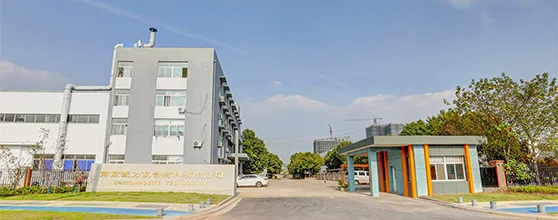Introduction
In today’s fast-evolving industrial landscape, the demand for innovative, durable, and sustainable materials is higher than ever. Among the top contenders in the materials industry, Fiber Reinforced Polymer (FRP) is emerging as a game-changer, providing unparalleled advantages over traditional materials like steel, aluminum, and wood. This shift has given rise to specialized FRP companies dedicated to designing, manufacturing, and delivering cutting-edge solutions for a variety of applications.
But what exactly sets FRP companies apart from traditional manufacturers? In this article, we’ll delve into the key differences, exploring why FRP companies are reshaping industries and becoming the preferred choice for modern solutions.

frp company
Understanding FRP Companies and Traditional Manufacturers
What Are FRP Companies?
FRP companies focus on the production of composite materials that combine high-strength fibers (like glass, carbon, or aramid) with polymer matrices. These materials are lightweight, corrosion-resistant, and incredibly durable, making them suitable for a wide range of applications, from construction and infrastructure to transportation and aerospace.
With their emphasis on innovation, FRP companies often collaborate with industries to create custom solutions that address specific needs, such as creating lightweight bridge panels, corrosion-resistant pipes, or durable wind turbine components.
Overview of Traditional Manufacturers
Traditional manufacturers, on the other hand, rely on well-established materials like steel, aluminum, and wood. These materials have been the backbone of industrial and construction projects for decades, prized for their strength, availability, and versatility. Industries such as construction, automotive, and manufacturing continue to rely heavily on these materials for their cost-effectiveness and long history of proven performance.
Key Differences Between FRP Companies and Traditional Manufacturers
Material Properties
One of the most significant differences lies in the materials themselves. FRP offers an excellent strength-to-weight ratio, making it ideal for applications requiring lightweight yet strong components, such as in aircraft or automotive parts. Traditional materials like steel, while strong, are significantly heavier and more prone to issues like rust or corrosion.
FRP materials are also inherently corrosion-resistant, which makes them a better option for environments exposed to harsh chemicals, saltwater, or extreme weather conditions. Traditional materials often require additional coatings or maintenance to achieve similar longevity.
Manufacturing Processes
The production methods for FRP differ significantly from those used for traditional materials. Techniques such as pultrusion, filament winding, and molding allow FRP companies to create highly customized and complex shapes efficiently. In contrast, traditional manufacturing processes like casting, forging, or machining, though effective, often lack the same level of customization without incurring higher costs.
Sustainability and Environmental Impact
FRP materials are increasingly recognized for their environmental benefits. Their durability and low maintenance requirements reduce the need for frequent replacements, lowering the overall carbon footprint of projects. In contrast, traditional materials like steel and aluminum have higher energy consumption during production and are susceptible to degradation over time, leading to more frequent replacements.
Customization and Innovation
FRP companies thrive on innovation, offering bespoke solutions tailored to specific industry needs. From creating aerodynamically efficient components for wind turbines to designing corrosion-resistant structures for chemical plants, FRP companies excel in customization. Traditional manufacturers, while versatile, often work within the limitations of their material properties, making it harder to achieve the same level of specificity.
Why FRP Companies Are Gaining Traction
Industry Trends Favoring FRP
The global push toward lightweight, sustainable materials is driving demand for FRP solutions. Industries like renewable energy, electric vehicles, and aerospace are increasingly adopting FRP for its superior performance and adaptability.
Cost Efficiency in the Long Run
Although the initial cost of FRP materials may be higher than traditional materials, their long-term benefits often outweigh the upfront investment. With reduced maintenance requirements and a longer lifespan, FRP proves to be a cost-effective choice for industries seeking durable and efficient solutions.
Challenges Faced by FRP Companies
Market Competition
Despite its advantages, FRP companies face stiff competition from traditional manufacturers who dominate certain sectors. Long-standing relationships and the perceived familiarity of traditional materials make it challenging for FRP companies to penetrate these markets.
Awareness and Adoption
Another hurdle is the limited awareness of FRP’s benefits among some industries and consumers. Educating stakeholders about the potential of FRP materials remains a crucial task for companies in this sector.
Conclusion
FRP companies are redefining the materials industry with their innovative solutions and cutting-edge technologies. While traditional manufacturers continue to hold their ground in many areas, the unique properties of FRP materials—such as lightweight durability, corrosion resistance, and environmental sustainability—position FRP companies as leaders in the future of industrial solutions.
For businesses and industries looking to modernize their operations, FRP companies provide a glimpse into the next era of material science, blending performance with sustainability. It’s time to explore how these advancements can revolutionize your projects and create long-lasting, impactful results.
Ready to embrace the future? Connect with an FRP expert today to discover how composite materials can transform your business.




























